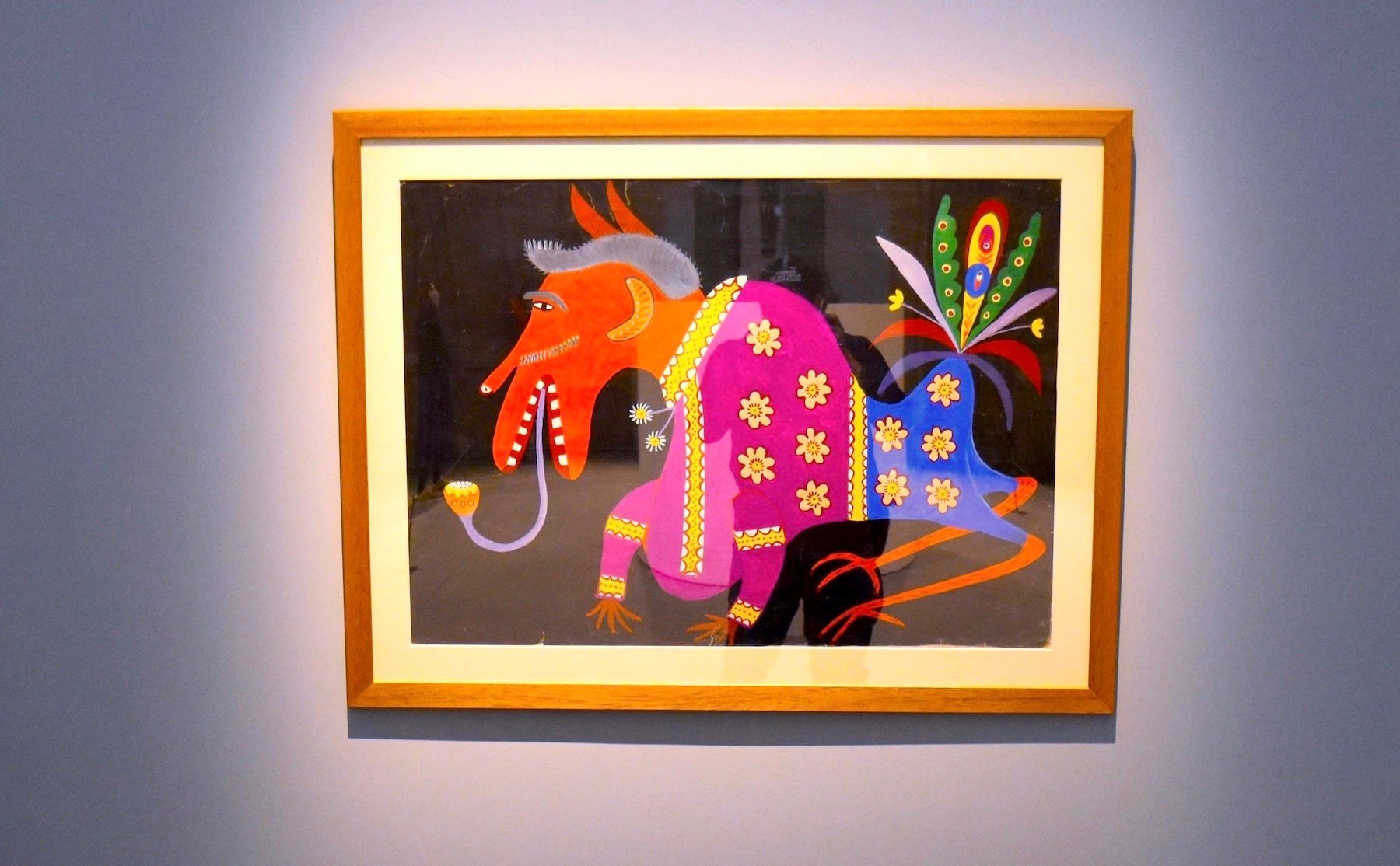
A humble gouache of a colorful anthropomorphic creature by Ukrainian artist Maria Prymachenko, whose vivid and fantastical visions have become an international symbol of peace amid the devastating war in Ukraine, was hastily added to the main exhibition at the Venice Biennale, the show’s curator, Ceclia Alemani, told Artnet News.
The last-minute addition expains why Prymachenko’s name is not included in the exhibition catalogue, which lists more than 1,500 works by more 213 artists.
“I didn’t know her before,” Alemani said, adding that the artist would otherwise have had a more central place in the show.
Born in 1909, Prymachenko began making art in the 1930s and was widely exhibited in her day. Influenced by Ukrainian folk traditions, including the intricate art of pysanka, the Ukrainian style of decorating Easter eggs, Prymachenko became a known inspiration for artists including Pablo Picasso and Marc Chagall. Her work appeared on Ukrainian stamps in the 1970s, and her face also appeared on Ukrainian currency.
But until recently, she was relatively little known to the international art world.
Alemani became aware of the artist’s work in February, when the Ivankiv Historical and Local History Museum in Kyiv, home to dozens of Prymachenko’s artworks, was burned down by Russian forces.
Early reports suggested that 25 of her works were burned in the assault, although it later emerged that a local man was able to evacuate at least some pictures.
Since the attack, her work, particularly Dove Has Spread Her Wings and Asks for Peace, has become a fixture at anti-war protests around the world.
Maria Prymachenko, A Dove Has Spread Her Wings and Asks for Peace (1982).
“The most interesting part of the work is in the titles she gives,” Alemani said, adding that the childlike names of her works are cruel reminders of the pressures of war and other societal ills.
The work included in the biennale, Scarecrow (1967), was made after Prymachenko took a 20-year hiatus from art-making following a series of scarring experiences, including the deaths of her partner and brother during the Second World War.
Her subsequent works, including Our Army, Our Protectors (1978) and May That Nuclear War Be Cursed! (1978), are phantasmagoric dreamscapes with a message of global peace.
The wall text at the Venice Biennale contrasts her fairytale style with the much more sober Soviet artistic language of the mid-20th century.
“As the title suggests, the work is a symbolic deterrent to the aggressors of every conflict,” according to the text.
At the Biennale’s introductory press conference, Alemani said it felt “miraculous” to finally see the show open after “more than two years of fear and terrible losses,” which underscored her sense of “necessity and responsibility” as the show’s curator.
Alemani added that she hoped the eleventh-hour inclusion of Prymachenko’s work would be understood as “a sign of solidarity [with] Ukrainian culture.”